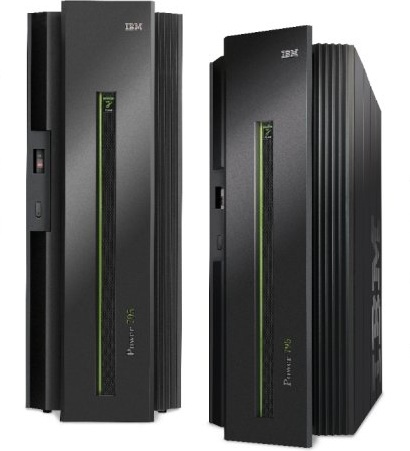ORLANDO – In some industries, you can’t work smart without stronger hardware.
There was no shortage of use cases for IBM Corp.’s new e-commerce tools at its Smarter Commerce Global Summit in Orlando: CRM, supply chain managament and particularly analytics in fields as diverse as retail, financial services, and oil and gas exploration. The discussion focused mainly on solving business problems and to a lesser extent, on the underlying technology powering it all.
[RELATED: IBM launches cloud e-commerce platform]
Invariably, some of these IBM customers, those juggling massive workloads that need to be processed at lightning speed, will use specialized, high-performance servers.
IBM showcased its Power Systems server line during the conference, machines it says can provide some of the highest computing performance on the market, with certain models incorporating up to 256 POWER7 RISC processors (each operating at more than 3 GHZ) in each box, not to mention multiple terabytes of memory and solid-state storage packed in.

The massively-parallel CPU architecture of the servers can be useful in many areas of commerce, such as immediate fraud detection (verifying a credit card on the spot, for example), or for getting an instant snapshot of customer sentiment from millions of social media messages, IBM says.
Technology that was yesterday’s “supercomputer,” used only for niche jobs like weather forecasting and calculating fluid dynamics, is now today’s enterprise technology, said Marcia Assor, senior marketing manager at IBM’s systems and technology group.
The POWER chip, said Assor, “was developed to handle scientific calculations in a rapid time frame, so those attributes have been carried forward to newer iterations that have become more user friendly.”
“It came out of the lab, and then started going into the data centre,” she said.
Power Systems allow enterprises to run multiple workloads on different virtual partitions on the same hardware, offering something IBM refers to as “live mobility,” where partitions can be moved across machines without any downtime.
“That means a lot if I’m Wall Street. That means a lot if I’m a non-stop airline reservation system that can’t take a massive outage” but needs to do maintenance, said Karl J Cama, CTO for retail industry at IBM’s systems and technology group.
This kind of scalability is also important for certain industries that get surges of demand at certain times, he said. Obvious examples of this include what retailers call Cyber Monday or Black Friday — days when Web shopping traffic spikes. But it can also happen unexpectedly; for example, when a single company tweet goes viral, Cama said.
The Power Systems enterprise servers run on either IBM’s AIX, IBM I, or UNIX-based operating systems. They can run Web services and analytics software, including IBM’s own WebSphere, SPSS and Cognos as well as offerings from their competitors. They can also be used to run rapid IBM DB2 database queries. Quite often, said Assor, the servers are built as custom “appliances” based on specific customer requirements.
This is in contrast to other pre-built appliances that run e-commerce workloads, such as those from Teradata Corp. and EMC Greenplum, which run SAS High-Performance Analytics.
But SAS Institute Inc. is also starting to realize the limitations of standard x86 hardware for real-time analytics, said Steve Conway, research vice-president of IDC Inc.’s high-performance computing group and a member of SAS’s advisory board. “They see their most challenging, most demanding customers pushing up into HPC requirements.”
Like IBM, SAS is exploring ways to use parallel computing to speed up analytics. In fact, Conway said, the “deep technology” in High Performance Analytics came from Platform Computing, a Canadian company specialized in cluster and grid computing that is now a part of IBM.